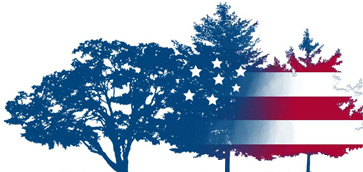There is no more challenging branch of government to lead and manage than the US executive branch with over 2.2 million Americans in civil service, another 2 million working with the Department of Defense, and 15 executive departments. It is a large complex ship to steer (OPM and OMB Federal Workforce Statistics). The challenge is even more daunting during periods of leadership transition with the political appointees or elected officials learning their new jobs and attempting to build partnerships with the existing civil servants. This particular transition is far more complex with the continuation of the pandemic and subsequent humanitarian and economic challenges.
With a new presidential administration underway the Wall Street journal recently offered a bipartisan retrospective from previous administrations and their failures as well as their accomplishments, How Joe Biden Should Handle White House Infighting. The article reflects on the presidential capacity to lead teams and offers advice for President Biden culled from examples. The WSJ article explains how hard it is to encourage new ideas and dissent from the White House staff while at the same time keeping the work environment productive and allowing the best ideas from multiple places to rise to the top.
The Public Sector Consortium has frequently discussed public sector management challenges in times of leadership transition and the importance of leaders skilled in Facilitation practices who can deal with; conflict, low maturity behavior, skilled delegation, assuring well designed meetings, and intervention on well-practiced defensive routines.
We encourage all public leaders those in new positions and those who are orienting training and assisting new leaders to take the time to learn your staff before you learn all the programs. It is impossible to digest all those three ring briefing books in a short period of time. It is easier to accept you will never acquire the subject matter expertise of the seasoned professionals working with and for you. Take the time to truly learn who you will be depending on and who will be an asset to you and the organization.
Share your vision for the organization and listen to the employee hopes for the future. Help each other understand the working norms of the existing organizational culture and negotiate change if they do not meet your expectations. Get a clear picture of the current reality from a variety of end-users (citizens, stakeholders, state and local partners. This investment at the beginning will serve you well throughout your tenure.
Please feel free to visit our website where we have four best practices on leadership transitions.
- Avoid Isolation As a New Leader (PDF)
- Leadership Practices to Orient and Support the New Leader (PDF)
- Managing Change in an Organization during a Transition in Leadership (PDF)
- Preparing for the Arrival of a New Leader (PDF)
We encourage all of you to harvest the intellectual capital of your public sector workforce they are in fact a national treasure.
Resources for this month
Please feel free to review this report and Systems Maps which were created by seasoned public leaders like yourself.
“The Leadership Dilemma in a Democratic Society”After describing the core practices of public leadership, the cross governmental group of leaders began a second year of work as it pondered the question: Why do leaders complain that in spite of attending leadership training they are rarely asked or rewarded for leadership performance? With this challenge in mind the group began looking at the underlying systems and structures that incentivize the behaviors of public leaders. They attempted to describe these systems in terms that were shared by all of their federal government organizations. The shared answers evolved into themes, which were then developed into systems maps. The maps are designed to help enlarge our perspective and to create a greater understanding of our governmental structures, thereby making it possible to collectively improve the larger system that serves us.
Click here to download “The Leadership Dilemma in a Democratic Society.”

